#trait: larva
Explore tagged Tumblr posts
Text


Wormmon BT3-047 and Stingmon BT3-050 by Tonamikanji from BT-03 Booster Union Impact
#digmon#digimon tcg#digimon card game#dcg#デジカ#digica#digisafe#Wormmon#Stingmon#BT3#Tonamikanji#digimon card#color: green#Lv3#Lv4#type: free#trait: larva#trait: insectoid#num: 00
70 notes
·
View notes
Text
I'm sure it's been discussed at length already but I think it's easy to assume saiyans are strong so their genes are dominant but I (like to) think it's the opposite. It's interesting to think that the ecological nature of a saiyan is stealthy and invasive, and according to Jaco a saiyan invasion was going to be extra dangerous to earth because they look like earthlings (and a lot of other human-like races in the db universe) and one baby saiyan will easily go completely undetected until it starts the extermination process.
so it actually makes a lot of sense to me that a saiyan hybrid would take more physical traits from a local species, while maintaining the potential to house a saiyan's strength and inborn power over ki (which I think due to the story following a group of people who use it is a thing we often forgotten is a super rare and dangerous ability in that universe, and inborn/instinctive to a select few very powerful races). Could also be a fun way to explain why their tails can detach and grow back, since that may be the only real Tell.
because like yeah gohan and goten look like goku but they also look like chichi ykwim? trunks and bulla look like bulma. pan looks like videl. thoughts i chew on.
I also just find parasitism a real good meaty horror concept to put in my little 'this is why everyone's afraid of saiyans' headcanon file along with 'can see in the dark, biologically strategic energy consumption, can go long periods without food or rest' and of course the canonical 'surprise monkey werewolf kaiju'
#like that bug larva that evolved to trick ants into taking it home and then it just eats all the ants larvae. what if saiyans are like that.#except they can also breed with pretty much any other species to make more invasive species#chewing on it#gnashing my teeth on these bones#dbtag#silly hours#also just please imagine tarble's kid. little gure lookin dude. insane power. i'd die klasjdlkasj#Also I just generally love the idea that there’s really no such thing as a pure bred anything and current ‘pure’ saiyans are already#Very likely the result of evolution and hybridization with a species made extinct by its offspring#And we know that the planet King V established as his own was occupied so it’s also possible that a lot of the younger saiyans#In Vegeta’s generation who were killed when Frieza destroyed the planet might’ve been a largely hybridized generation we never saw#Especially if they too were a race with black hair and black eyes or were selectively bred with saiyans to maintain the façade of purity#The surges in power levels in Vegeta’s generation could also be an indicator of hybridization according to Nappa#Which could if you want to dig real far imply that both Vegeta and Broly are already hybrids#Which could even further explain why Vegeta’s kids share their mothers traits so glaringly — his saiyan genes might already be competing#Could also explain why Trunks and Bulla may or may not have been born without tails depending on your headcanons 🤔#Anyway I am still gnawing on this
76 notes
·
View notes
Text
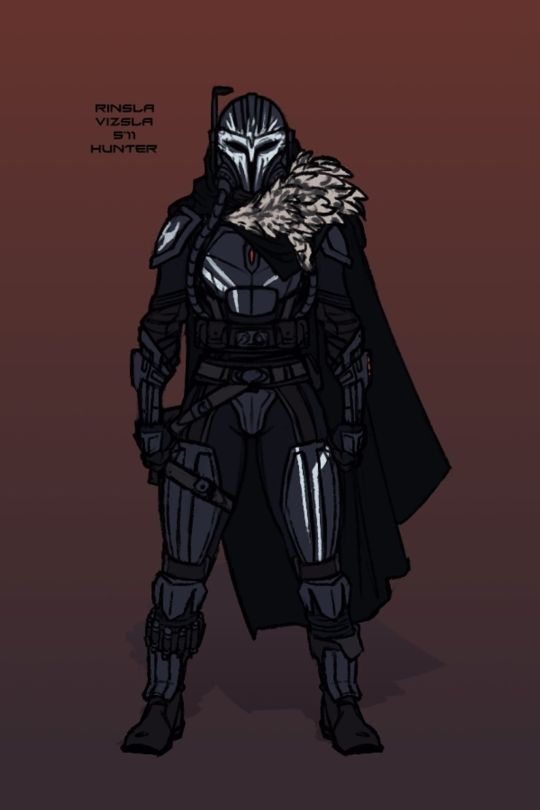


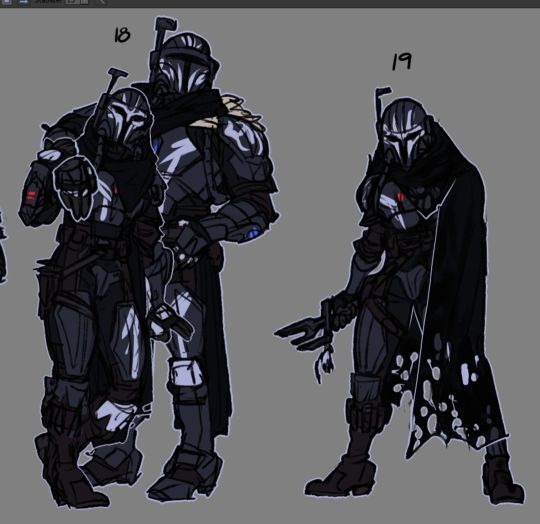
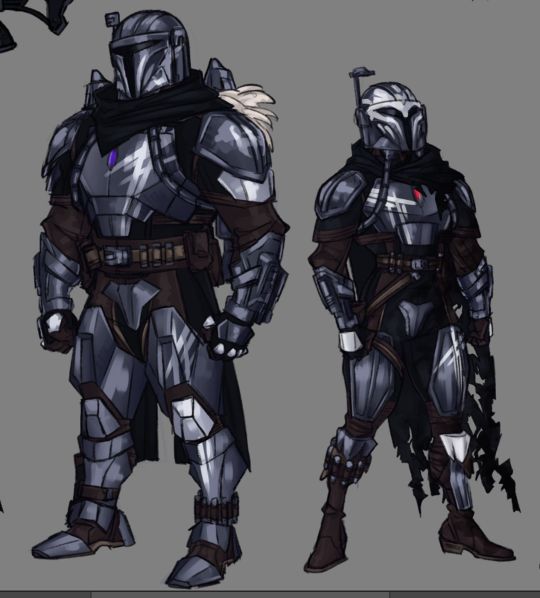
Some early days design stuffs for my favourite crab kids :)
#BasDraws#oc#Rinsla Vizsla#Nosran Vizsla#ive refined their designs a lot more but im about to rework them again to be more eea accurate#less galactic republic more shadow of the old republic#star wars#original character#mandalorian#mandalorian oc#tognath#alien#character design#nudge nudge...theyre gonna be getting their new armours soon :3cccc#nosrans such a behemoth because he was stuck on a wookie when he was a larvae#hes got retractable claws he inherited from them too!!#yeah thats right in our game tognath are like xenomorphs and take minor traits from their hosts if theyre different species#rins host...was a lothwolf#and all she got was trauma (and a slight unnatural force sensitivity)#and also seemingly a weird tether to her grandfather thru said lothwolf#she spoke to tarre once :)
53 notes
·
View notes
Text
Presently going insane rn:

Anyway let me talk about the one question that I have been contemplating ever since I began rotating petrosapiens in my mind. How the fuck do babies?
If you caught the reblog before this post, you might have noticed that a post about fat in aliens brought me to think about petrosapien fat, which contradicts a lot of what I've already established for them being an exoskeletal species, let alone being a hard sell in the sci-fantasy of rock crystal people of canon. Turning to one of my two animal inspirations of petrosapiens - bugs and more specifically in this case insects - I found out that insects can't build up fat, not in the way mammals or reptiles can, BUT they store the most of it in a very significant stage;
Larvae!
Then it fucking hit me, I already made some early headcanons about child development in petrosapiens (though I can't remember if I posted them or had a post ready to send) where they were already in a metamorphosing stage, though the responsibility fell solely to the layer who would use crystallokinesis to feed an 'egg'. I didn't fully like the idea though mostly in retrospect, because it felt strange in the 'pulled out of my ass' kinda way, a method of child rearing that felt more obligated to use crystallokinesis as a primary source for feeding to sorta justify at the time the inherent power petrosapiens have towards crystallokinesis.
Instead, between then and now I fully connected the idea that crystallokinesis is less of a power and more of an extension of a petrosapien's nervous system, compression of quartz through the use of a more electrical based nerve network that happens to not distinguish between person crystals and the similar crystalline structures of Petropia. With this in mind and the new idea that petrosapiens have larvae, wouldn't it be so cool if the larvae had the typical Earth-like electrochemical nervous system of humans (or I suppose bugs here) that adapts to an electrical focused nervous system through the process of metamorphosis? Where the larvae creates it's petrosapien crystal skin by building a chrysalis and melting within it to create their new body?
Unlike my old headcanon where the layer had to remain with the egg and constantly feeding them with crystallokinesis, this larvae version can feed itself when provided and so long as the chrysalis is well protected, the moment metamorphosis stage takes place the parent(s) can have momentary reprieve from child rearing and better prepare themselves for the toddler/adolescent stage for their child. The little grub probably doesn't even eat crystals in the early stages of their larvaehood since eating crystals initially marks as the materials for chrysalis building before it becomes a nutritional food source. Instead the little grub might be feed plants and potentially animal products in order for it to inherit and develop the chemicals required to build a crystallovorous stomach and the acids used to break silica down into digestible nutrition.
That does mean that early child rearing is a little bit more functionally deadly towards the very crystalline parents, who have to legitimately watch so that their fingers aren't bitten off, but holding the little grub is easy when it's covered in silicone membrane. The larvae at this stage is a little bit more resistant to any crystallovorous plant secretions due to the polymers of it's membrane, as well as the higher diversity of oxygen, hydrogen, and carbon in it's body it has in comparison to adults or adolescents who've undergone metamorphosis, their innards becoming a more uniform silicone and their skin being the crystalline silicon many crystallovorous stomachs have adapted to eat.
It also means that the shape of a grub is also considered to be cute to a petrosapien. Things from caterpillars to maggots look so much more charming to a petrosapien's eyes that back on Petropia there would be a large proportion of pet owners having what would considered on Earth to have bugs for pets. In fact, a rather common form of pet Petrosapiens might have would be a large millipede/centipede like animal that would be the size approximate of a feather boa and often held that way too, because while they do not undergo metamorphosis, they look like a larval grub well into adulthood and are considered to be very cute for it. Pet owners with these pets who are also parents love to see their little larvae and their 'dog' getting along and would love telling their adolescent all the cute stories of the little grubs curled up against each other. Petrosapiens in the age of the Surface Craze might have had the opportunity to get a few baby pictures like that, and it would be considered very cute unless you were a human afraid of bugs or not personally a fan.
Petrosapiens on Earth might see the miniature bugs and explode with cuteness overload, others might fuck around and find out that they can make human-petrosapien hybrids Makarat you chupacabra you're lucky petrosapien kids aren't born with crystals pay child support to your human wife who birthed a grub-!
And that's the post send tweet-
#petrosapien#ben 10#xenobiology#at this point i only think about petrosapiens as bugs rarely as reptiles- maybe i should add more reptile stuff#like leathery eggs that the grubs eat their way out of yeah let's add that#since the larvae don't have powerful enough stomachs to eat crystals yet let alone the jaw strength#which looking at a grub you can see the vague body plan of a petrosapien#the opening face- the significantly more developed rear legs (present as 'swimmerets')-#you can (mostly) tell from even the grub stage that your kid's a guy or a girl because they even have the nubs for back spines in grub stag#even if it turns out to be an excess/lack of 'testosterone' or an intersex trait#it was their grubs that petrosapiens were even able to connect themselves to old fossil records-#an extinct shrimp or prawn type thing that shares similarities to their little grub- though already with armour or even exoskeleton#also this grub thing makes the crystal twins slightly less of a hassle at least for the still unnamed human mother because i suck at names#means lucía had a grub for a twin sister for a hot while- nor did the family have much in the way for crystal for blanca to eat#so instead of crystals blanca ate bones for her chrysalis and hey look she's bone white now which- oopsie osteokinesis#no matter all the crystallokinesis that happens is with lucía and oof ouchie it's scoliosis#well- replacing keratin AND scoliosis but woopsie#that should be in an oc post
20 notes
·
View notes
Text
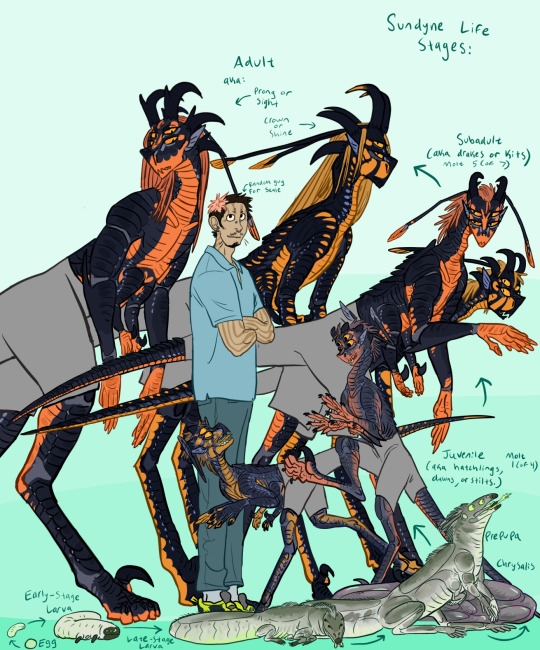
Now, time for the grub to giant creature speedrun. Oh and there's a guy with stripes there too.
The sundyne life stages are:
'Egg, Early-Stage Larva, Late-Stage Larva, Prepupa, Chrysalis, Juvenile (aka hatchlings, dawns, or stilts) molt 1 (of 4), Subadult (aka drakes or kits) molt 5(of 7), Adult (adult females can be called prongs or sights while adult males can be called crowns or shines)'
Here's some more info:
They follow a pretty similar process to Drecu. Clutches are around 6-12 eggs that the female lays on the male’s lower back/hip area (they're held in place with the male's big gonopods)
Larva are soft n squishy. As they’re growing, they look almost identical to Drecu (even their extra little arms are hard to notice because they stay under the body most of the time) the most noticeable difference is the prepupa size and darker coloring, which sometimes aren’t as pronounced as a drew here. Sundyne grow Very fast (multiple individuals have noted that it’s pretty painful during the juvenile and subadult stages). Unlike Drecu, how they emerge from the chrysalis depends on good ol’ genetics rather than pheremones/enzymes. Even freshly pupated, there is a notable difference between male and female that continues on to subadult and adult stages. They're called dawns because of their muted coloring, or stilts because of their disproportionate leg and arm length.
Not all adult females have these, but the one I drew has those branches on her horns as an indication of fertility/matriarch status. Reproductive females will drop their horns and regrow them with this new feature; the more clutches they have, the greater the size and number of prongs. Nonreproductive females might drop and regrow their horns due to environmental changes (such as better nutrition or isolation from other sundyne), but they won’t get the prongs.
Males can’t shed their horns at all! However, as you can see here, they are generally more brightly colored and yellowish than females. The male pictured here actually has an absolutely goated color scheme, he’d be seen as extremely attractive and popular thanks to his dark black and prominent yellow coloration. They see yellow as their special royal color, since that pigment is what makes their signature bright orange patterns (as opposed to the simple red of Rox. The black is actually just a very dark blue). I was playing around with how much yellow tone the average Sundyne could have, as opposed to the mutation where they *only* have the yellow color (an extreeemely special and cool thing for them)
Misc fun facts:
-The random guy for scale has several splice traits going on at once: stripes, whiskers, and naturally growing pink hair! This is pretty common (I just haven’t drawn a lot of humans for example XD). Now that they aren’t being monitored or intentionally tailored, these naturalized gene mods just mix n match randomly.
-he’s not pictured here duh, but the current Seru (Emperor) has the all-yellow mutation, which was part of why he was able to take the other clans by storm ( thanks to that “born holy” type charm that they just couldn’t ignore. ). His giant angry wife, however, is fairly standard as far as Sundyne females go.
-As you could’ve guess from what I just said about the average Sundyne egg clutch size, Maro actually *had* around 5 blood-siblings from the same clutch as her! I wonder what happened to them…
#weird lookin dinosaur#Sundyne#theyre so hard to drawwww#original species#alien species#speculative biology#xenobiology#spec evo
241 notes
·
View notes
Text
Here Are My Top 10 Favourite Ants
(Updated due to public outcry and political pressure.)
No. 10 - Yellow Crazy Ants
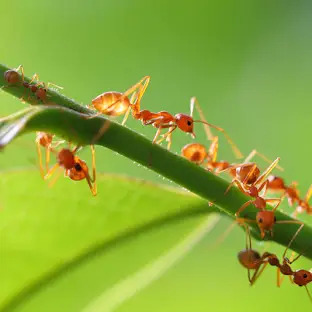
These guys are on a list of "one hundred of the world's worst invasive species" formulated by the International Union for Conservation of Nature (IUCN), having invaded ecosystems from Hawaii to the Seychelles.
But don't hate just because they are awesome at establishing themselves in a new habitat due to their aggression toward other ant species, lack of aggression toward members of their own species, efficient recruitment, and large colony size. Respect the hustle!
No. 9 - Paraponera Clavata
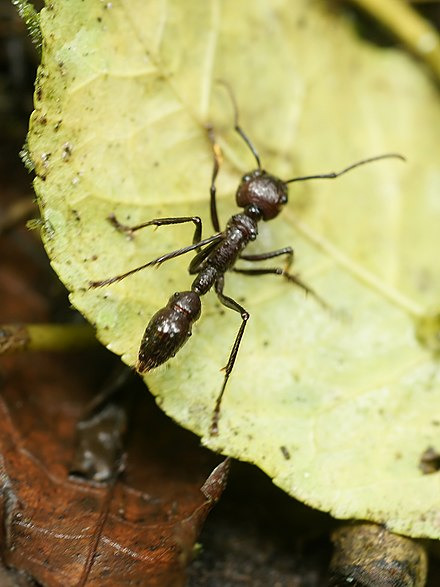
Also known as the "bullet ant," "the one wounding deeply," or "24-hour ant", referring to the full day of pain that follows being stung.
This ant's sting currently ranks the highest of all insect stings on Justin O. Schmidt's informal sting pain index, at 4.0+. Some victims compared the pain to that of being shot, (hence the nickname,) with "waves of burning, throbbing, all-consuming pain that continues unabated for up to 24 hours."
Lymphadenopathy, edema, tachycardia, and fresh blood appearing in human victim feces are common symptoms from even a single sting.
Un-fuck-with-able.
No. 8 - Honeypot Ants
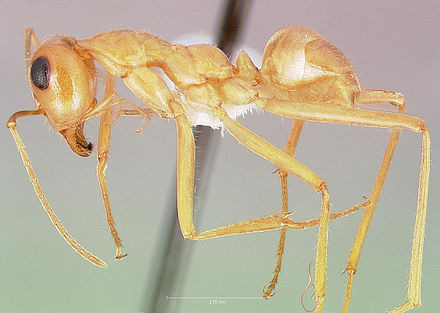
The name honeypot ant comes from the peculiar development of replete workers, whose abdomens become so swollen with food that they are used by the rest of the colony as living food storage. They are "drained" during famine, usually the wintertime, to sustain the colony, leaving them as "flaccid depletes."
Disgusting. 10/10
When a replete worker fills with food, a portion of her digestive tract swells and displaces other abdominal organs. It can expand about four to five times its normal linear dimension when they are fully engorged with food.
I can relate. I have eaten pasta in such quantities to displace my own organs many times.
No. 7 - Red Imported Fire Ants
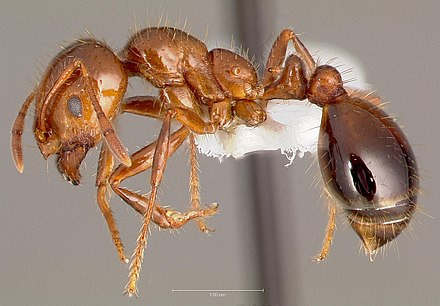
Though South American in origin, the red imported fire ant has been accidentally introduced to many other parts of the world.
More than 14 million people are stung by them in the United States annually. Most victims experience intense burning and swelling, followed by the formation of sterile pustules, which may remain for several days. Up to 6% of people may suffer from anaphylaxis. More than 80 deaths have been recorded from red imported fire ant attacks.
These ants thrive in urban areas. Nests can be built under pavements and foundations. This means not only can they damage or destroy individual structures, but red imported fire ants can have an affect on broader infrastructure, damaging land, business and property values. In agriculture, they can damage crops and machinery, and threaten pastures. They also pose a threat to animals and livestock, capable of inflicting serious injury or death, especially on young, weak, or sick animals.
With annual damages estimated in the billions of dollars, these ants are considered the second worst thing to arrive on North American soil since 1492.
No. 6 - Black Garden Ants
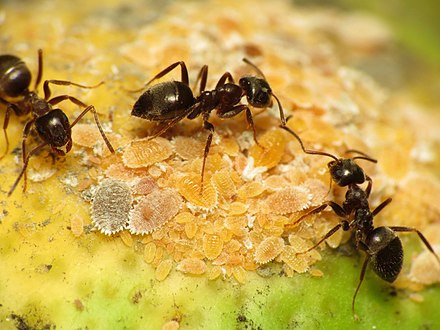
When building their colony, these ants will structure it so as to inhibit the transmission of different contagions. Different communities within the colony are segregated by a limited number of connective nodes, allowing for greater protection of vulnerable hive members, such as larvae and pupae.
A trait I could only wish other species performed so well.
No. 5 - Pharaoh Ants
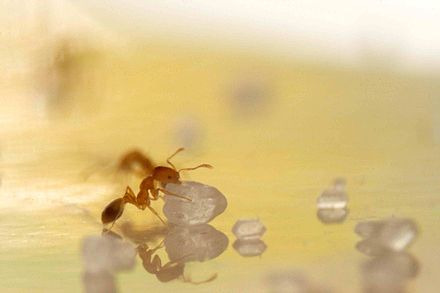
These ants utilize three types of pheromones. One is a long-lasting attractive chemical that is used to build a trail network. It remains detectable even if the ants do not use the trail for several days.
The second pheromone is also attractive, but will decay to imperceptible amounts in a matter of minutes without reapplication. This pheromone is useful in marking food sources as these are unpredictable and liable to change quickly, so not worth the longer-lasting pheremone.
The third pheromone is a repellant. If an individual finds an unprofitable area with little food or significant danger, it will release this repellant pheromone, which will warn others and cause them to look elsewhere. While positive pheromones indicating lucrative foraging sites are very common in social insects, the pharaoh ant's negative pheromone is highly unusual and pharaoh ants were the first species found to employ such a thing.
No. 4 - Argentine Ant

This species is like the Mr. Worldwide of ants. It has established itself in every continent except Antarctica (including many oceanic islands.)
It even has "supercolonies" that extend across hundreds or thousands of kilometers, first reported in California in 2000, then in Europe in 2002, Japan in 2009, and Australia in 2010.
Several subsequent studies used genetic, behavioral, and chemical analyses to show that supercolonies on separate continents actually represent a single global supercolony.
The researchers stated that the "enormous extent of this population is paralleled only by human society."
How can you not admire (and fear) the ambition and the achievement?
No. 3 - Leafcutter Ants
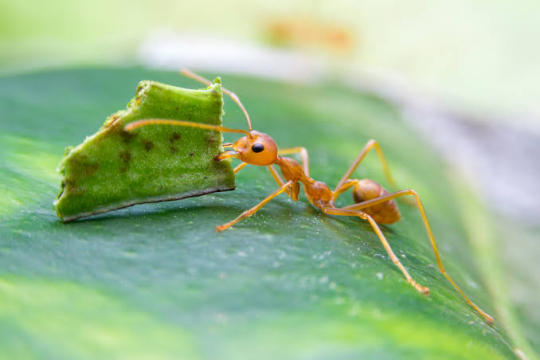
"Leafcutter ants" is a bit of an umbrella term, as it consists of over 45 ant species, but this gang is just so remarkable. Next to humans, leafcutter ants form some of the largest and most complex animal societies on Earth. They are known for their advanced agricultural practices. These ants are not merely foragers but skilled farmers, cultivating their own food by collecting specific kinds of leaf matter in order to produce specialized fungi in their nests.
No. 2 - Formica Fusca
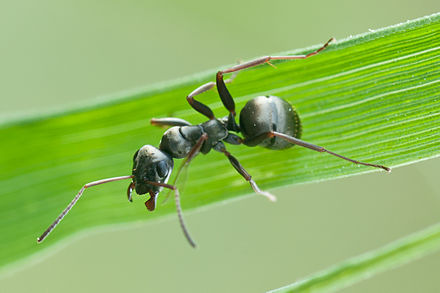
These ants, (sometimes called silky ants or dusky ants,) are fast to learn, and only a single presentation of stimulus is enough for them to form a genuine long-term memory. This formed memory is also resistant to extinction.
Ants of this species can also detect volatile organic compounds emitted by cancer cells. After a 3-trial conditioning, they can differentiate cancer cell lines from healthy ones. They can also differentiate between at least two different cancerous cell lines.
A similar ability to detect human tumours has been shown in more recent studies.
No. 1 - Weaver Ants
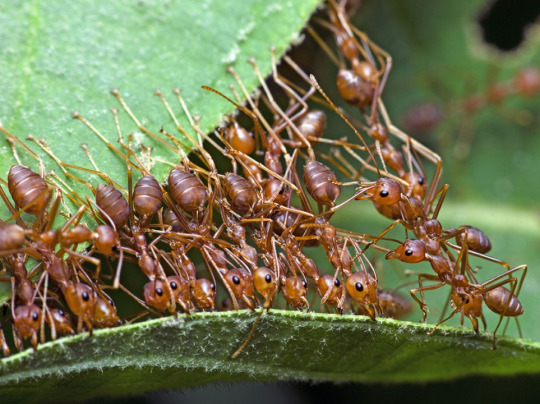
An arboreal species, (i.e. they live in trees,) weaver ants are known for their unique nest building behaviour where workers construct nests by weaving together leaves using larval silk. Colonies can be extremely large consisting of more than a hundred nests spanning numerous trees.
How they sew the leaves together is a remarkable feat of cooperation. Typically, dozens of ants will need to form a chain to first bridge a gap between two leaves, then pull them together so another team can hold them in position whilst yet more ants sew the gap together with silk. But adult ants can't make silk, so they have to use larvae to do it, picking the larvae up and using them like little pots of glue to spin a mat of silk between the two leaves. Altogether, a hundred ants might be involved in the same task. This is a pretty remarkable piece of evolution and a testament to the power of cooperation!

#ants#Myrmecology#bugblr#insectblr#bugs#insects#bug#insect#entomology#ant#antposting#invertebrates#antblr#parasites#parasitism#weaver ant#formica ant#leafcutter#bullet ant#fire ant
238 notes
·
View notes
Text
Bomber Flies: these flies launch their own eggs into the nests of wasps and bees, hovering in mid-air as they do so; the females also have a unique perivaginal pouch that is known as a "sand chamber" because it is filled with sand

Above: Anastoechus sp. (top) and Anastoechus nitidulus (bottom)
The flies of this family (Bombyliidae) are generally referred to as "bee flies," because they are known to mimic bees and bumblebees, but many of them are also known as "bomber flies," thanks to their unusual ovipository technique.

Above: a bomber fly of the genus Anastoechus
As the female bomber fly is preparing to lay her eggs, she will usually look for a soil-hidden nest that already contains the eggs/larvae of another insect. Most bomber flies lay their eggs in the nests of wasps and bees, but there are a few species that are known to target beetles, grasshoppers, locusts, other flies, and/or caterpillars, instead. Once the bomber fly has found a suitable nest, she will hover over the entrance to the burrow and rapidly flick her abdomen up and down until she has launched a single egg into the nest. She must then go searching for more nests in which to lay her other eggs.

Above: Anastoechus sp.
After hatching, the parasitoid larvae of the bomber fly feeds on the eggs/larvae of the host species (i.e. the nest's original occupants). As this article explains:
When a bee fly egg hatches, a tiny larva called a planidium emerges. The planidium is quite unlike most fly larvae (also known as maggots); they are adapted for moving quickly in search of a host. Once the planidium finds a host, it will attach itself to the host’s exterior, like a leech or sea lamprey, and begin to feed. Yes folks, this is the stuff of nightmares.
Female bomber flies also have another peculiar trait: their abdomen contains a specialized perivaginal pouch known as a "sand chamber." During the ovipository process, the fly fills this pouch with fine grains of sand, and her eggs are then coated in the sand as they pass through the perivaginal pouch. The pouch is also lined with elongated setae ("hairs") and enlarged spikes that prevent the grains of sand from spilling back out.
The overall purpose of the "sand chamber" is still unclear, but many researchers believe that coating the eggs in a layer of sand may help to improve the viability of the eggs by preventing them from being damaged as they are launched to the ground, and that it also provides them with some camouflage after they have landed. Some researchers have argued that it prevents the eggs from becoming dehydrated, because the barrier helps to improve fluid retention, while others believe that it improves the mother's aim by increasing the weight of each egg. There is some evidence to suggest that it could also prevent the eggs from being detected (and then destroyed, abandoned, or ejected) by the host species, because the sand helps to mask/mute the egg's biochemical signals.

Above: Anastoechus barbatus
Adult bomber flies tend to feed on pollen and nectar. They are excellent pollinators, and their parasitoid larvae may also help to keep wasp and bee populations in check.

This article notes that bee flies (particularly Anastoechus nitidulus) likely served as the inspiration for the Pokémon known as cutiefly:

Sources & More Info:
USGS: Bombyliidae Fly
Biological Journal of the Linnean Society: The Evolutionary Pattern of Host Use in the Bombyliidae (Diptera) Family
YouTube: Video of a Bomber Fly (Bombylius major) Selecting a Nest and then Launching her Egg into the Burrow
Smithsonian Institution Press: Bee Flies of the World (pages 6 and 27)
Michigan State University: Bee Flies
Animal Diversity Web: Genus Bombylius
Animal Diversity Web: Anthrax albofasciatus
Journal of Geek Studies: The Entomological Diversity of Pokémon
#entomology#diptera#hymenoptera#insects#bombyliidae#bombylius#bomber fly#nature is weird#anastoechus#bee fly#flies#bugs#biology#arthropods#cute animals#animal facts#pokemon#cutiefly#weird bugs#no matter how bad my period gets#at least I can take solace in the fact that I do not have a “sand chamber”
242 notes
·
View notes
Text
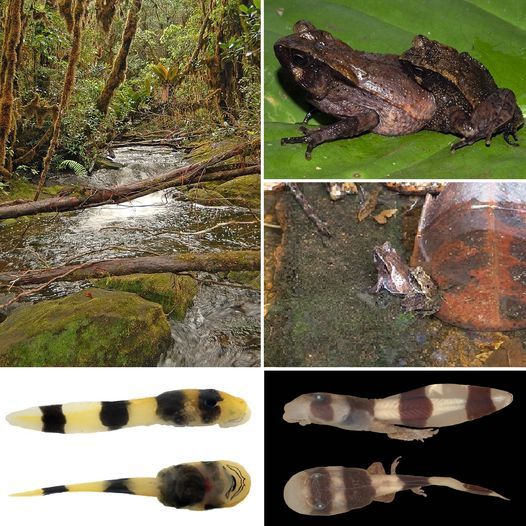
The remarkable larval morphology of Rhaebo nasicus (Werner, 1903) (Amphibia: Anura: Bufonidae) with the erection of a new bufonid genus and insights into the evolution of suctorial tadpoles
Pedro Henrique dos Santos Dias, Jackson R. Phillips, Martín O. Pereyra, D. Bruce Means, Alexander Haas & Philippe J. R. Kok
Abstract
Tadpoles serve as crucial evidence for testing systematic and taxonomic hypotheses. Suctorial tadpoles collected in Guyana were initially assigned to Rhaebo nasicus through molecular phylogeny. Subsequent analysis of larval and adult morphological traits revealed synapomorphies within the clade encompassing R. nasicus and R. ceratophrys, prompting the recognition of a new genus described herein as Adhaerobufo. The new genus is distinguished from other bufonids by specific phenotypic traits including an enlarged, suctorial oral disc with distinct papillae arrangements, and the presence of certain muscles and narial vacuities at the larval stage. However, only a few adult external characteristics (e.g., enlarged eyelids, infraocular cream spot), seem to be reliably discriminative from related genera. This study underscores the significance of larval morphology in anuran systematics and offers new insights into the evolution of suctorial and gastromyzophorous larvae within bufonids.
Read the paper here:
The remarkable larval morphology of Rhaebo nasicus (Werner, 1903) (Amphibia: Anura: Bufonidae) with the erection of a new bufonid genus and insights into the evolution of suctorial tadpoles | Zoological Letters | Full Text
236 notes
·
View notes
Text
OK OK— I wanna talk and spill the lore of eldercacao and the fanchild, I CREATED, Choco Monarch. Here how it goes and the fanchild reference of—
Choco Monarch [Eldercacao fanchild]
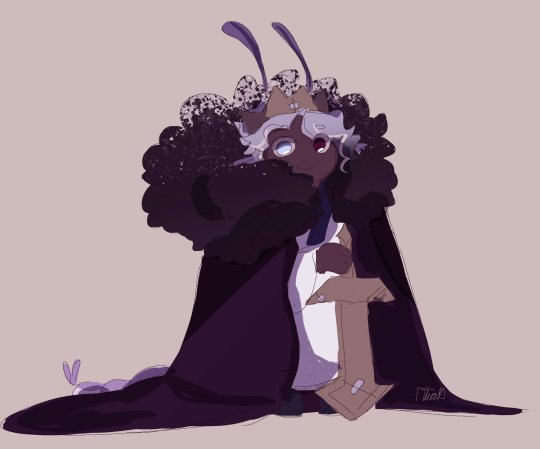

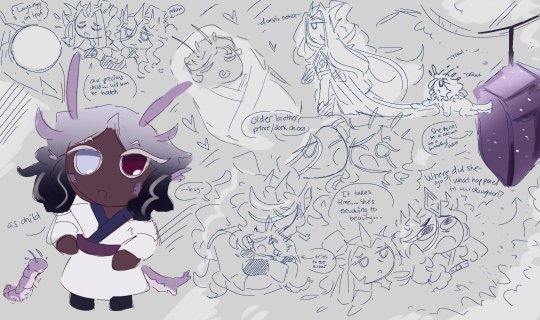
Choco Monarch Cookie, known as Elder Faerie and Dark Cacao's daughter, has been living throughout the years at the faerie kingdom as a little baby caterpillar. She was born out of an egg, a butterfly egg, as I do headcanon that Elder Faerie blah blah blah [created the egg and took care of it by himself at first as a secret as he didn't want to concern Dark Cacao] as he put it near the calmest place yet where leaves are to carry the egg (like an actual butterfly egg that stays before hatching)
Her fathers were always there for the egg, even when it hatched as a newborn baby ( or choco larva?), as an example lore drawing of this
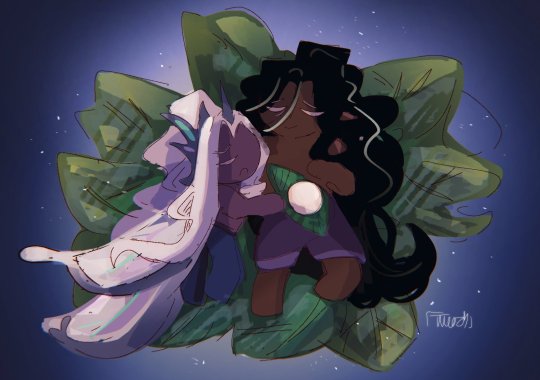
As she comes out from the egg and the fathers wrapped her carefully with some comfy cloths, as the example of this drawing here

especially Dark Cacao as he knows the experience as a father with dark choco. For Elder Faerie though, this is the first time for him to be an actual father, so he's typically learning and Dark Cacao, his partner gave him tips and advice on how to take care of a baby and give the baby love later in the years as their daughter grew.
She did grow, as a little caterpillar daughter they had, and usually the difference between the father's relationships from each other for their daughter is different. Again Dark Cacao is more experienced, as he wants to try another shot of love to a child he has now and take care of her more better than the previous child he had, who is still a prince but.. not as much love as her though. Elder Faerie is still trying, as his partner proceeded to give him tips and advice, even though Elder does love Choco Monarch so much and tries his best to show it to her.
Choco Monarch Cookie is a very gentle child, not having a drama personality and very hungry after she hatched, because that's how caterpillars are at first! She basically wants to eat anything that is around her, even dark cacao's hair sometimes when she gets the hold of it when he tries to comfort her or even hug her close enough, she doesn't really eat elder faerie's hair though, which is strange.
She is also half faerie and half cacaoian, and her later on butterfly cycle..she has more faerie traits than her own cacaoian traits!! Yet, she was hatched and has those traits from both of her fathers still. She even has an older brother prince choco, as they are now related, and he doesn't know that he has a younger sister until she came to visit one time to the dark cacao kingdom as dark cacao wanted to introduce his new daughter to the kingdom, especially the prince, and oh boy they had a good relationship for each other, especially as siblings and prince choco was nice back then before he was into with the sword. Yet they had a good relationship and Choco Monarch had to wear very * very warm clothes, due to caterpillars and butterflies don't really get used to the cold, but she could handle it, especially her cacaoian father on her side. But she doesn't really visit the dark cacao kingdom due to the borders of the licorice sea.
She then sometimes follows Elder Faerie around, like a little caterpillar they do to another related bug like them, a butterfly to a butterfly, and he doesn't really notice due to working on other things as king like Dark Cacao and not as good showing emotions in general, especially to his daughter as well.
Anyways, as she grows more, she has the feeling of changing, a weird feeling once she was about to go to her adult years, so then she disappeared, somewhere, until one of her fathers checked in for her to see if she was ok, which is Dark Cacao. Turns out that he couldn't find her around her area so he was starting to get worried until suddenly he found her but not quite knowing it was her at first, in a cocoon, which he was freaking out and questioning at the same time that an actual cocoon was hanging off from a branch,/ceiling. He then wanted to open it but then Elder Faerie came in and straight up saying no to him as he also told him that their daughter was in that cocoon, as the progress of her turning to a butterfly in about a few weeks, which made Cacao very worried about waiting for her to come out for WEEKS. Everyone seems to be questioning if she will turn out to be a beautiful butterfly, a pretty butterfly, or an ugly butterfly because you never know what a butterfly would look like before coming out from its cocoon. Also, she is the very odd common half faerie to be in an actual butterfly cycle, as other faeries were created differently, as she is the odd one out, yet everyone is different you know!
Then a few weeks later and it turns out, she was more beautiful than ever, which made her fathers very proud, especially dark cacao having a child but full of beauty and how well she has been taken care of as a young child and now that she's an adult!
She then has a little progress of traveling back and forth from her father's kingdoms but still living in the faerie kingdom for Elder's help and assistance, until Elder Faerie and Dark Cacao had become more separated, because of their duties, and Choco Monarch understood and will be taking care of Elder Faerie for a bit until something happens.
Another lore example drawing I did but her past and future look out, especially her fathers' love and of course...passing.. in the next few paragraphs??
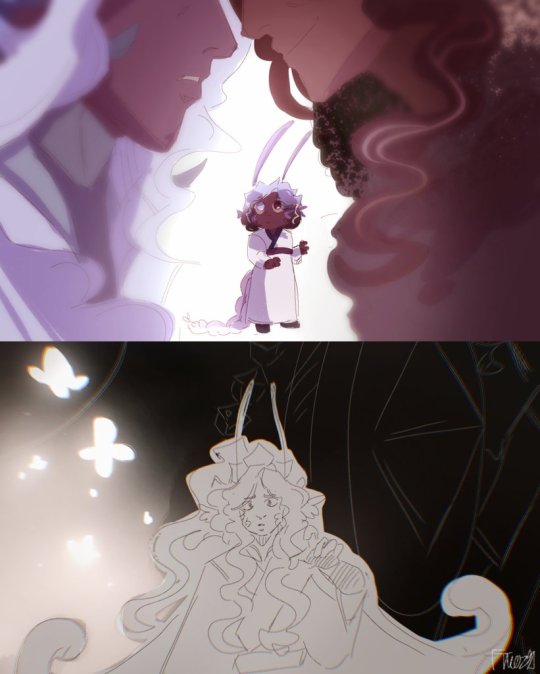
Well anyways continue on, something DID happen as her older brother went to the Cookie of Darkness and Dark Cacao needed HER assistance after he was banished. So then she traveled once more with very very warm clothes to visit Dark Cacao until she met someone, a shadow figure who was completely outrageous to see her and wanted to fight her back, also turns out that it was Dark Choco, as he proceeded to continue on the COD, as he wants to run away from her as quickly as possible but she stopped him before he became outrageous, until they stopped fighting and arguing until he says, "we'll meet again" and escaped from her grip and gave her flashbacks of him being prince to her as a child.
She then visited her father at the dark cacao kingdom and didn't mention meeting her older brother who was banished from the area. She then instead took care of the broken father until he was better and she instead decided to move somewhere peaceful for her to live at, away from the kingdoms where she's typically on her own (still working on where at though)
For a while passes, after chapter 13-14 and beast yeast had started, it turns out dark cacao had a dream, about his long distance partner, who can't see much but sending letters, found out that the dream wasn't real but at the same time a true illusion, as it gives out a final truth that Elder Faerie from the beast yeast, as an example of why I made this comic for:

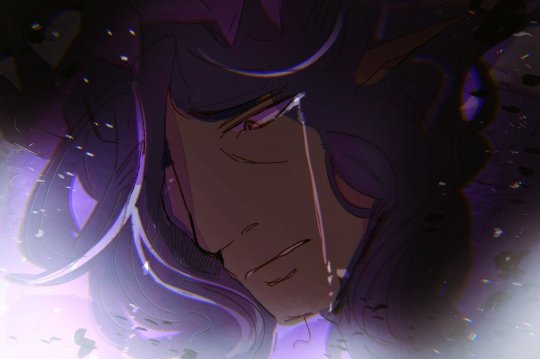
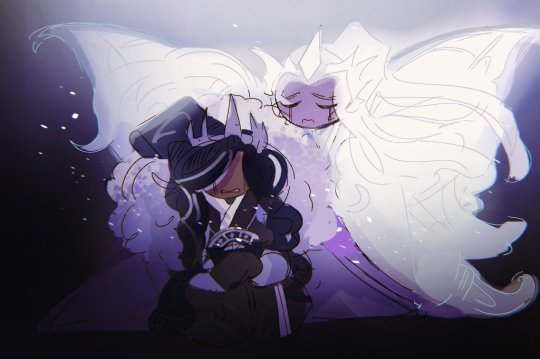
So Dark Cacao alerted their daughter by a letter and Choco Monarch had to come back to the faerie kingdom during the beast yeast to see what's going on with risk.
It was strange to be back to her childhood home, as she proceeded to travel and the faerie kingdom welcomed her once more until meeting with White Lily, who'd discussed what happened and it turns out what Dark Cacao had was true, that Elder Faerie has passed away. It made Choco Monarch very shocked but then finally told the truth about herself and White Lily now realized and was surprised that Elder Faerie didn't tell her that he has a daughter, who was related to her friend Dark Cacao Cookie. She did understand that her being the position as queen, she then gave Choco Monarch the role of it because of the higher role as Elder Faerie's daughter. (Which actually explains more specifically from someone else who told me this, this is not my idea actually)
Years passed and Choco Monarch had sent letters to her other father that she was doing alright and had now taken the role of the kingdom, until the other part of the beast yeast came up and happened to Dark Cacao and proceeded to what happens next.
SOME HEADCANONS
And that's all to it but here's the thing, if the illusion of Dark Choco became king and Choco Monarch is still queen, then that means they are both sibling rulers of their fathers' kingdoms, and since dark choco really said, "we'll meet again" turns out they did but as rulers and it's pretty funny how they would meet together like that and became happy, if ever happen
Also to have this included, I feel like the recent dragon lord Dark Cacao and Choco Monarch would meet again, as the end of episode 4 of the beast yeast, you could see how the dark cacao kingdom warriors, including Crunchy Chip and Caramel Arrow, depending on the beast yeast episode 4 lore definition, that they are perhaps located nearby the faerie kingdom? As the biome looked similar, yet it could mean that it could be that, as this example here.
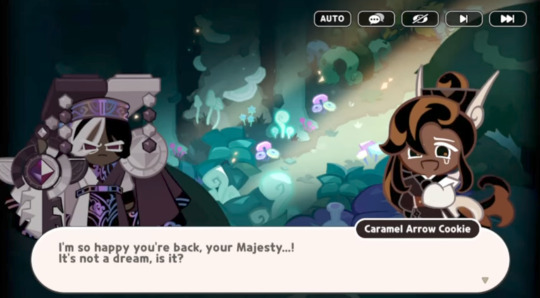
Yet I might go crazy for this part, but also very unsure, however that would definitely be the time that him and his daughter could meet each other during that point!
And that's a bit of the information and background story for Choco Monarch!! As she is my very first fanchild that I could possibly think of from my most comfortable ship, she had me FOR MONTHS of lore ideas, adorableness, and have good OC concepts. I personally do love Choco Monarch as everyone adores her so much ever since July 2024, as a lot of them did draw her for fun and wanting to know her lore and backstory, which is right here!!
#cookie run#cookie run kingdom#crk#cr kingdom#art#digital art#eldercacao#dark cacao cookie#elder faerie cookie
174 notes
·
View notes
Text
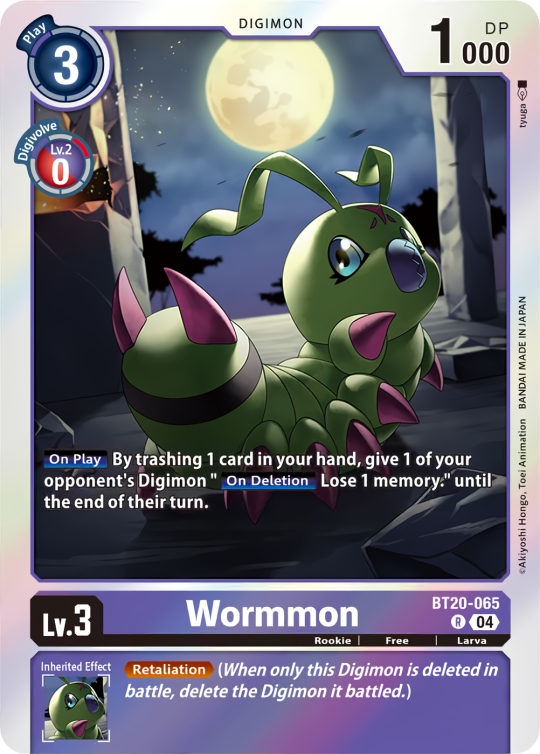


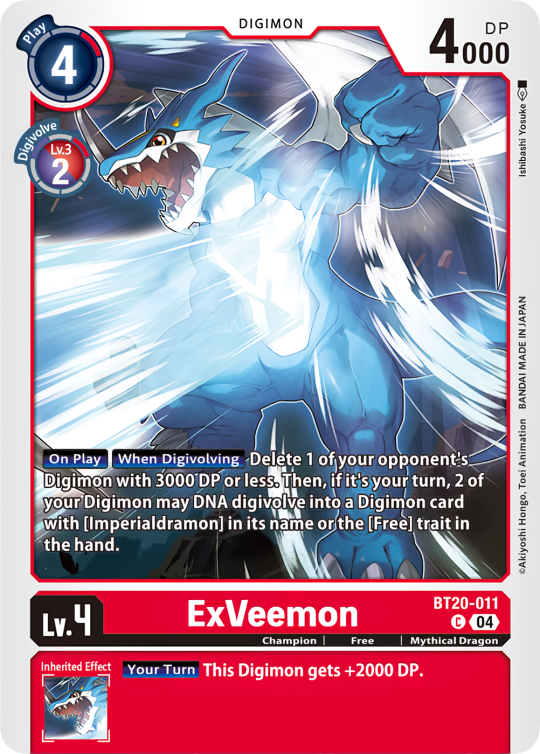
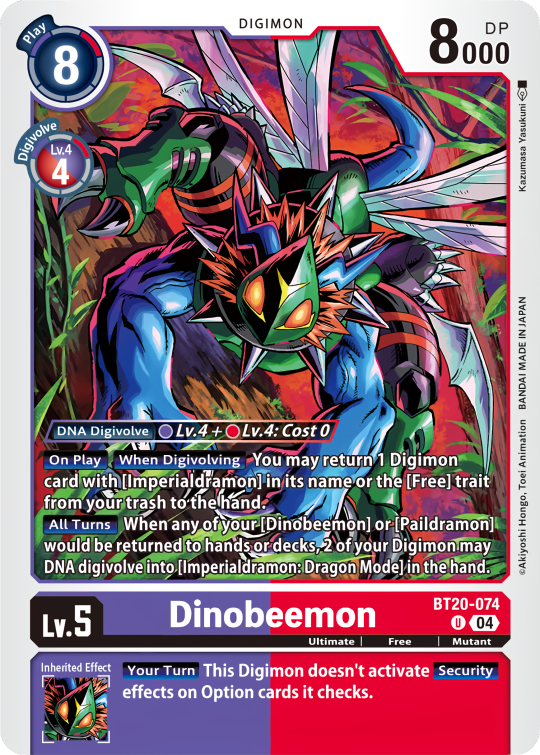

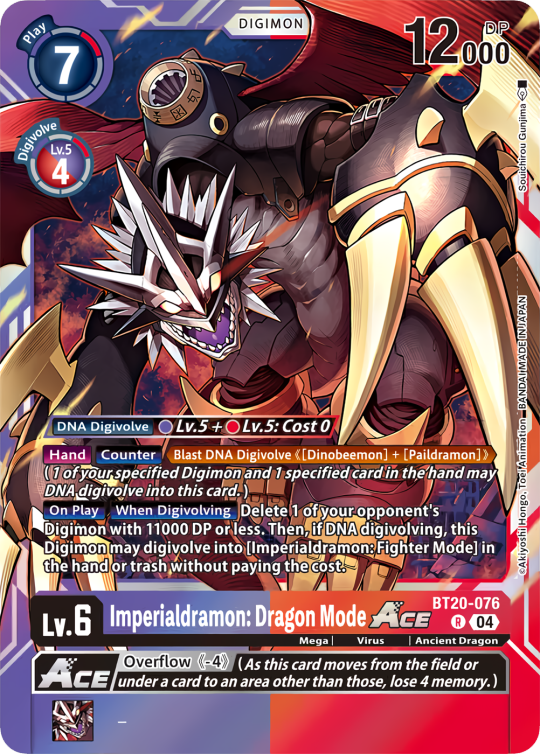
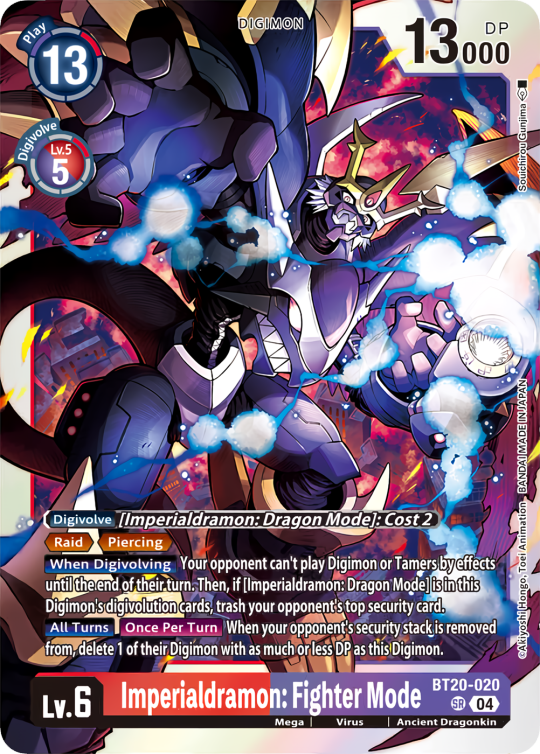
Wormmon BT20-065 and Veemon BT20-009 by tyuga, Stingmon BT20-066 and ExVeemon BT20-011 by Nakano Haito, Dinobeemon BT20-074 and Paildramon BT20-016 by Kazumasa Yasukuni, and Imperialdramon: Dragon Mode Ace BT20-076 and Imperialdramon: Fighter Mode BT20-020 by Souichirou Gunjima from BT-20 Booster Over the X (BT19-20: Special Booster Ver.2.5)
#digimon#digimon tcg#digimon card game#digisafe#digica#デジカ#DCG#BT20#Wormmon#Veemon#Vmon#Stingmon#ExVeemon#XVmon#Dinobeemon#Paildramon#Imperialdramon#Imperialdramon DM#Imperialdramon FM#Imperialdramon Dragon Mode#Imperialdramon Fighter Mode#ace digimon#digimon card#color: red#color: purple#jogress#type: free#trait: larva#trait: mini dragon#trait: insectoid
96 notes
·
View notes
Text

Angelic ranks. This isn't entirely to scale, angels tend to be abour 4ft~ and archangels tend to be about 10ft~. I also couldn't fit in the serapth for the time angel line, so I'll post them separately when I get around to it.
The life cycle of an angel is pretty simple- they don't die from old age, so they simply live until they are killed. A new angel will not really have any personality or individuality, but they tend to develop this stuff and change their appearances from the default the longer they live and spend time working on earth.
As for archangels, there's 3 per angelic type (1 for each variant in that type, and 216 total). They are mentors and managers for every angel in their subgroup, and tend to stay in heaven MOST of the time as to not do too much damage to the earth with their amplified power. If an archangel falls, an angel from the same variant is selected to take their place (sort of like bee larvae being selected to be fed royal jelly). All archangels are more humanoid to a degree, however none of them have ever looked the same as their appearance changes to match what values and traits they embodied most strongly. Due to this, when you are looking at religious or historical artwork/literature, you can often tell which archangel is or was in power from the way they are described or drawn. But only an angel could actually tell you more, human accounts tend to be very… vague.

Here's the OLD 2021 version of this, just for archival and comparison purposes. Different angel type too of course (drive angel).
129 notes
·
View notes
Text
Mobs that have babies (in game):
Armadillos
Axolotls
Bees
Camels
Cats
Chickens
Cows
Dolphins
Donkeys
Drowned 1
(The) Ender Dragon 3
Foxes
Frogs
Glow Squid
Goats
Hoglins
Horses
Husks 1
Llamas
Magma Cubes 4
Mooshrooms
Mules
Ocelots
Pandas
Pigs
Piglins
Polar Bears
Rabbits
Salmon (?) 5
Sheep
Skeleton Horses 2
Slimes 4
Sniffers
Squid
Striders
Turtles
Villagers
Wolves
Ziglins (Zombie Piglins) 1
Zoglins (Zombie Hoglins) 1
Zombies 1
Zombie Horses 1
Zombie Villagers 1
Mobs that do not have babies (in game):
Allays 6
Bats 7
Blazes 8
Bogged 2
Breezes 8
Cave Spiders 9
Cod 9
Creakings 8a
Creepers 10
Elder Guardians/Guardians 8b
Endermen 7a
Endermites 9
Ghasts 7b
Iron Golems 8
Parrots 7
Phantoms 11
Pillagers 12
Pufferfish 9
Ravagers 7
Shulkers 9
Silverfish 9
Skeletons 2
Snow Golems 8
Spiders 9
Strays 2
Tropical Fish 9
Vex 8
Wardens 13
Witches 12
(The) Wither 8
Wither Skeletons 2a
Whatever manner reanimates different kinds of zombies seems to reanimate the young as well as adults, regardless of their species or the type of zombie (ie. husks, drowned).
Conversely, whatever reanimates skeletons does not reanimate the young, and thus they are likely reanimated in a completely different fashion to zombies. The only exception is the skeleton horse, which must in turn be reanimated in a different manner than other skeletons. Perhaps it has more in common with zombies than other types of skeletons.
2a. Whether or not wither skeletons are reanimated in the same or a similar way to other skeletons is questionable. They share the trait of lacking young with other skeletons, but are otherwise quite different.
3. The Ender Dragon does not have young, but it does produce an “egg”. Assuming it is in fact an egg, and not some strange byproduct of the beast’s biology or death, this counts - regardless of if it can be hatched by a player or not.
4. Both magma cubes and slimes are capable of asexual reproduction.
5. Salmon can be found in three different sizes. Whether these different sizes are genetic, a product of the environment, or an indicator of age is not entirely clear. 6. Allays are capable of asexual reproduction (in this case it is a magical process rather than a biological one), but they are created as fully-formed adults, and thus technically do not have any subadult phases.
7. These animals do, in fact, have young. Their young are altricial (meaning they are born unable to move or eat independently, and are dependent on the parent(s)), so it is more that they are very unlikely to be seen due to the way that they are reared.
7a. Endermen are also altricial, and hide their young in burrows to protect them from predators, competitors, and their dangerous environment. 7b. Ghasts are another altricial species. They protect their larvae within their largely hollow gas-filled bodies, in a somewhat similar manner to the mouthbrooding of certain fish and other animals.
8. These creatures are created (or suspected to be created), not born, and thus don’t have any subadult phases. These creatures are called constructs.
8a. In the case of Creakings, little is known about their nature in general. At this present time, they seem to be created by the Pale Oak, rather than having their own reproductive abilities.
8b. Guardians are constructs. but are also capable of reproducing. They typically have a eusocial colony structure similar to that of bees - the Elder Guardians being the queens, or reproductive females. Should the Elder Guardians die, however, the smaller drones can reproduce amongst themselves to produce more drones. Notably, drones cannot metamorphose into Elder Guardians like some other eusocial animals. This suggests that the different castes within their species were manufactured by their creators.
9. Similar to altricial species, these creatures do have young, they’re just unlikely to be encountered or noticed by players. In these species, it is because the young are born as very small larval stages, and are often hidden from view of potential predators - like players.
10. Creepers have consistently thwarted any attempts of study or classification. Whether they are a plant, an animal, a construct, or something else entirely, is up in the air. How, or even if, they reproduce is not fully understood.
11. The nature of phantoms is strange and little is known about them. They are undead, but do not resemble any living counterparts that could have died and been reanimated to create them. It is possible they are not animated by an external force, like how zombies and skeletons are, and instead are their own unique organism animated by other means. This makes their method of reproduction a real mystery, one yet to be studied and solved.
12. Pillagers and witches seem to be the product of environmental change in villagers. Thus, the reason their are no baby witches or pillagers is likely not because they cannot reproduce (though granted, it’s not been proven that they can reproduce), but is more likely because the young would just be villagers, and would only become pillagers or witches as they grow.
13. Wardens are bizarre and seldom studied organisms. Much of their life history is unknown, including how/if they reproduce and how/if they develop. This may be difficult to study - for a number of reasons, really, but chiefly because they are seemingly not from this realm at all, and the conditions they now live in may not allow them to reproduce or rear their young.
#long post#this one kinda got away from me fellas#this is probably a pain in the ass to read I apologize#but it was fun for me and that’s what matters#text only#lore#minecraft#speculative biology
114 notes
·
View notes
Text

This post is about mealworms! Everyone loves mealworms. That's not true. But mealworms ARE an insect that many people have close experience with, as they are very easy to take care of, and this makes them a popular choice of food for pets like chickens or lizards!
This also means that poor little mealworm has become a victim of consumerism, and certain companies are intent on marketing the little larva to as many people as possible. And to do so, they may try to make mascots! Insect character designs, designed to have broad appeal by people who want to make money... are they any good? No, not usually. Let's look at them!

We start with Chubby Mealworms, the mascot design I've seen the most often, and the one that has merchandise. I often lament that the only mealworm plushes in the world look like this thing! This certainly does communicate "worm", but the wrong kind of worm! This is 100% natural, and 100% EARTHworm-shaped. And then it has a face on its side, and big ol' human hands sticking out. Like, a fifth of this entire character design is human hands!
It does look kind of appetizing, I suppose? Kind of like a dollop of something squeezed out of a tube, like melted cheese. I think I'd rather eat this worm than look at it.
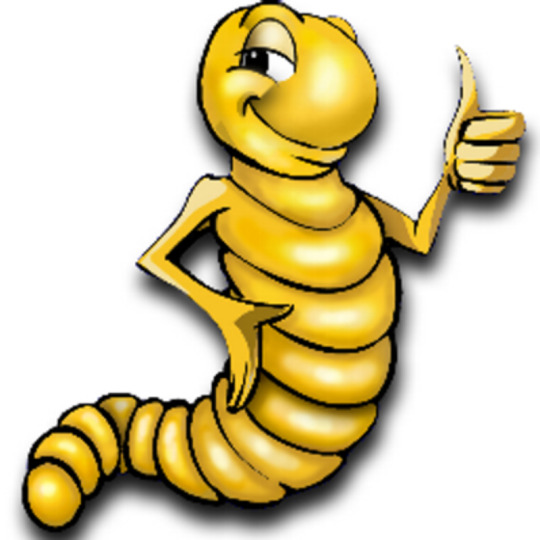
Next is the mascot of Rainbow Mealworms. And jeepers! I sure dislike this! I very much disagree with its thumbs-up. The body is certainly wormy, and the color spot-on! But then we get to the arms... the once again very human arms! There certainly seem to be bones in those. They could even be YOUR bones! One segment up, we get a... neck, supporting the main event: the head. A head that would looks like it belongs on a cartoon turtle. And I wouldn't even like that cartoon turtle! I would not even feed this to a chicken, out of respect to the chicken. This is a mealworm that Moorhuhn would enjoy.

But speaking of chickens, let's finally get to a good mealworm! Sweet Pea's Mealworms knows that less is more sometimes. A worm with big ol' eyes is just cute! That's all there is to it! I especially like that this mealworm has a worried look. It's realistic! This isn't one of those traitorous mascots that sells its own kind as food. Instead, the chicken is the main mascot, and I think she is quite enjoying the role. Until she gets tired of mealworms and starts craving soldier fly larvae instead...?

Next we have West Georgia Mealworms! And... I kind of like them? They have cartoon frog faces, I suppose, but unlike the Rainbow Mealworm situation, I would actually like a cartoon frog with this face. These look more like maggots than mealworms, but overall, they express a sort of joy and innocence. I don't want to feed these to anything, I would rather nurture them! They have no idea of the fate that awaits them... poor things! The first mascots on this list which I pity.

Mein gott! Einen Homer Larva! The floating timeline of The Simpsons means that Homer will one day look like this in a flashback episode. Look forward to it!

AAAAAAAAAH! This is the scariest one yet! Cheeky in a bad way, and that expression is just sinister. This worm has indeed consumed many of its own kind, using the utensils it holds in its floaty hands. It is aware of what it has done, and hopes to do so more in the future. The more it cannibalizes, the more its smile grows. There's no way around it. This mealworm must be killed.

But THIS one, by Party Bugs, is COOL! Simplified and stylized, in a pleasing way! Sometimes less is more. But maybe we should convince mealworm mascot designers in particular that less is ALWAYS more. I think we would be safer that way. This is also the only one on this list to be a mascot for mealworms as a human snack! That probably has a lot to do with the stylization, but I appreciate that it keeps the core design traits of a mealworm anyway.
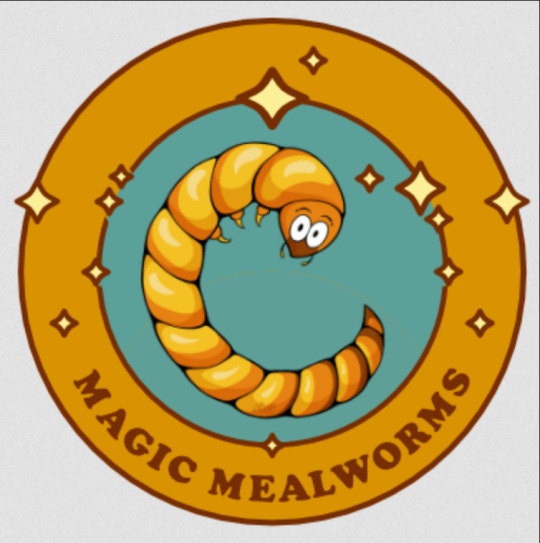
We end with my favorite! Of course it's my favorite. The most realistic one of all, with funny cartoon eyes. Good job, Magic Mealworms! They realize that magic does exist in the world, in the form of creatures! But of course, my favorite mealworm is the realworm! Give a mealworm a kiss and be careful not to eat it! Unless you want to!
57 notes
·
View notes
Text

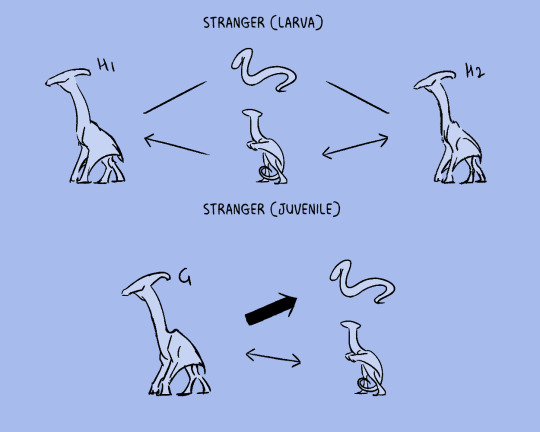
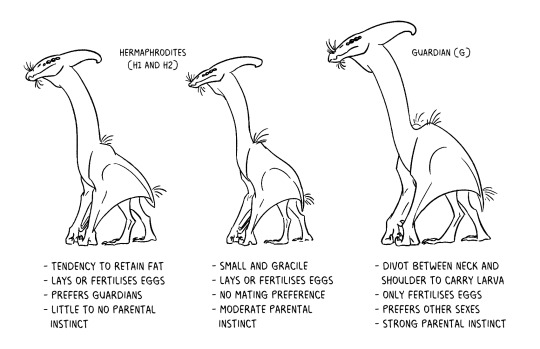
Was thinking about the differing social bonds/relationships between different demographics of karragul. Pink individual represents a generic karragul in the first diagram.
This also forced me to somewhat finalise the sex system I've been rolling around my brain for a while. Karraguls ancestrally had 2 sexes comparable to male and hermaphrodite. They and their kin do not have differentiated gametes like eggs and sperm - all gametes have some energy stores and the ability to swim, roughly resembling a square with dual flagella - so the labels aren't perfect though. After inland and coastal karraguls split, the "hermaphrodite" sex also began to diverge. Whether inland karraguls actually have 3 sexes yet, or have speciated again, is unclear, but most cultures recognise 3 clusters of traits and have 3 genders to suit.
Note that hermaphrodites 1 and 2 are placeholder names, but the third sex are named guardians in-universe due to their shouldering of most parental duties. H2 will occasionally assist their favourite guardian (mating is a free-for-all, with no long-term pair bonds) with eggs and larva, but guardians are expected to be the sole provider for the first few stages of life. When children have fully metamorphosed and are running around, things shift more to communal care and/or expecting them be self-sufficient.
Also want to note that the traits in the infographics are just those typical of the groups. Like humans, there's variation in physical traits and sexual preference. You can have small guardians, or H1s interested in H2s, or H2s with a strong desire to be parental.
116 notes
·
View notes
Text

Adult mayfly showing off their beautiful wings and super long tail. Mayflies are yet another "dinosaur bug" with traits that may have been present in the first insects to evolve. For example, they can't fold their wings and instead hold them upright. Adults are very short-lived, and their sole purpose is to mate and lay eggs. The larvae live in fresh water and are an indicator of a healthy aquatic ecosystem.
unidentified species, order Ephemeroptera Northeastern Pennsylvania, US
#mayfly#Ephemeroptera#dinosaur bug#creature#bugs#bugblr#nature#nature photography#biodiversity#animals#arthropods#inaturalist#entomology#insect appreciation#fly fishing#wetlands#rainbow wings#macro photography#insect photography#wildlife
166 notes
·
View notes
Text
Jerk Ford AU: Shifty Full Profile
[Fire Chief Doppelgänger art by Lariatcat]

[Smoky the cat art by @tearosepedall. Shifty True Form by myself and my younger brother]

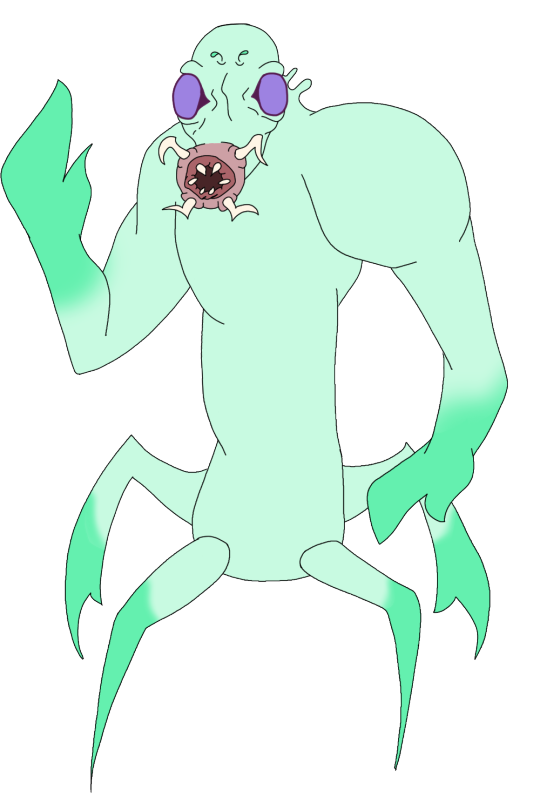
“I can assure you, my resemblance to ‘the bean can guy’ is a coincidence.” - Fire Chief Doppelgänger, lying his ass off.
Demographic
Home Dimension: Dimension-PJC311
Designation: Shifty-PJC311
Full name: Wolfgang Von Strange né Doppelgänger (Human Form), Shifty the Shapeshifter (Original Form), Smoky (Cat persona)
Nickname(s): (Fire) Chief, DG, Wolfy
Age: 30
Height: 6’2 (Human Disguise)
Weight: Approx ~300 lbs
Sex/Gender (Pronouns): As Shifty: Simultaneous Hermaphrodite / Nonbinary (They/Them/It/Its) 💛🤍💜🖤 | As Wolfgang: Male/Male (He/Him) | As Smoky: Female/Female (She/Her)
Sexual/Romantic Orientation: Demisexual/Panromantic 🖤🤍💜🩶 / 🩷💛💙
Occupation: Chief of the Gravity Falls Fire Department, Ambassador of Paranormal Relations
Family: Thomas “Tad” Strange (Husband), Samuel “S” Strange (Son), Gravity Falls Fire Department (Adoptive Family), Dr. Stanford "Ford" Pines (Original Caretaker & Pseudo Father Figure)
Backstory: Here, Here, Here, and Here
Inventory
Worn:
Long sleeve V-neck shirt w/ Fire Dept Symbol (gray)
Turnout pants w/ hanging suspenders (brown w/ gray knee patches and yellow/silver reflective stripes, yellow suspenders)
Loafers (black)
Belt (black)
Wedding band (rose gold)
Weapons:
Shapeshifting
Other Equipment:
Crowbar
Halligan bar
Hatchet
Medicinal:
First Aid Kit
Misc.
Leather wallet
Family photo of himself, Tad, and Samuel
Connections
Named Friends / Allies:
Tate McGucket
Daryl Blubs
Edwin Durland
Stan Pines
Manotaurs
The Hide Behind
Multi-Bear
Steve The Tree-Monster
Fairies
Named Enemies / Rivals:
Old Man McGucket
Celestabellebethabelle
Gremloblin
Lilliputtians
Bigfoot
Ma and Pa Duskerton
Gnomes
Preferences
Personality Traits: Clear-Headed, Principled, Guarded, Unforgiving, Serious, Irascible
Love Giving Language: Words of affirmation
Love Receiving Language: Acts of service
Likes: Quiet Introspection, Classic Cars, Nature Walks, Sunlight Patches
Dislikes: Cold, Scientists, Dogs, Untidiness
Hobbies: Cooking & Baking, Wax / Wood Carving, Mushroom Hunting, ‘Therapeutic Hunting’
Favourite Foods:
Regular drink: Pitt Cola (Cherry flavour)
Alcoholic drink: N/A (Teetotaler)
Dish: Frijoles refritos w/ tortilla chips
Snack: Western Heart's Ease
Dessert: Marionberry Pie
Trivia / Other
Wolfgang's design is almost identical to Canon Shifty's first seen shift in the show - the man from the High Flyin' Beans logo. The differences are the outfit, and he makes it younger to match his age (30). His hair is black instead of gray.
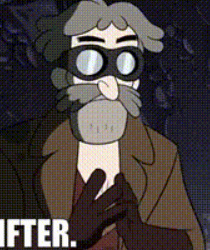
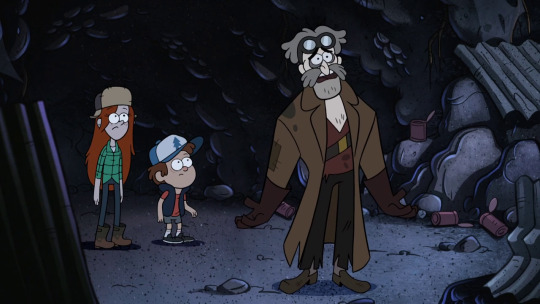
They named themself when they were young at the insistence of the fire department as they were raising them.
—They are just as bad at naming things as Ford.
—One of the firefighters happened to be a German Literature Enthusiast with their favourite author being Johann Wolfgang von Goethe.
—Before they named themself, the fire department just called them "(Baby) Falls"
—Their human middle name is “Von” because they misunderstood that von/van just means of/from.
As Wolfgang, his clothing is real, seperate from his human shift. He'll hide his clothes somewhere for later when he takes other forms.
Shifty’s species seems to bear similarities to beetles, caterpillars, and butterflies / moths.
—As a larvae, they had to sneak out at night to gorge themself on wild plants because their nutritional needs weren’t being met with human formula or food.
—They have an imaginal disc system which is what allows them to freely shapeshift
—Larvae of their species also eat toxic plants, which they cannot do as an adult without shifting their body chemistry and digestive system. This is so their larvae are too toxic to be picked off by predators or by adults of the species.
—The type of plants they eat as larvae heavily influence their adult colouring.*
*Compared to their canon counterpart, Shifty’s true form is mainly greenish-white, and their eyes / appendage tips are purple. This is because as a larvae their favourite plant to eat was Parish’s Nightshade.
Palette for true form here.
They breathe through their skin, which is how they can breathe even when they shapeshift into objects that lack breathing anatomy. When they shapeshift into other creatures their shift would breathe the same way as an original creature of that species would, with their skin breathing being a backup.
Shifty does not drink alcohol or use other recreational substances because they do not want to risk losing control of their form.
Their cat persona, Smoky, is a Hemingway Cat (polydactyl), as a sort of nod to “The Author”. The design is also based off of "Bruno, the 'extra' cat" the only difference being that Smoky is a female cat and is missing one eye.
Regardless of their disguise, dogs are terrified of Shifty.
Shifty can change their proportions and density, but not their actual weight, when shifting. Regardless of what form they are taking, they are always around 300 lbs like their true form.
Tad thinks their son Samuel was born through an out-of-state surrogate. He was not. He was actually an egg that Shifty did not think was possible before.
#Jerk Ford AU#Jerk Ford#JFAU#I might reblog this later if Wolfgangs concept updates#Shifty#Shifty the Shapeshifter#The Shapeshifter#Wolfgang Von Doppelgänger#Wolfgang Von Strange#Wolfgang Shifty#Tad Strange#Shifty x Tad#Tad Strange x Shifty#Character Profile#Character Reference#The Archivist#S the Archivist#Three technically four artists#Gravity Falls#Gravity Falls AU#AU
41 notes
·
View notes